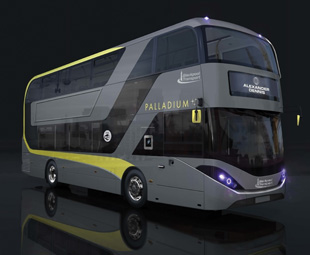Cummins starts to stop-start

FRANK BEETON reports on the inclusion of stop-start technology in a commuter bus application.
The never-ending quest for reduced fuel consumption and lower emission levels has dramatically increased the incidence of stop-start functionality in motor vehicles.
Most of us have experienced this feature in modern motor cars. It is usually left to the driver’s preference to decide whether it is allowed to do its own electronic thing, or be cancelled out, because the continuous restarting of the engine (following planned or unplanned stops) becomes a tad irritating after the initial novelty wears off.
Some owners are also concerned that, if left unchecked, the stop-start function will result in shorter battery life and accelerated wear of the starter motor and flywheel ring gear, through which the engine starting function is enacted.
However, a good opportunity clearly exists in the urban bus operating environment – with its frequent halts at bus stops and traffic signals – to reap some of the stop-start benefits. Realising this, the United Kingdom arm of global engine manufacturer Cummins has launched a stop-start version of its ISB Euro-6 diesel engine into the market.
The system successfully completed a 4,2-million cycle testing regime. These tests reportedly revealed fuel savings of four to seven percent, and a 30 to 40 percent reduction in NOx emissions.
Subsequently, an initial batch of 100 stop-start equipped engines has been supplied to bus and coach manufacturer Alexander Dennis Ltd. Deliveries of the first complete vehicles have already been made to First Group operations in Glasgow, Scotland, and Bristol, England.
The level of preparation applied to the ISB engine for stop-start operation was surprisingly substantial. Modifications include a new 210 000-event starter motor, new flywheel and ring gear, modified wiring, an engine speed sensor, updated fuel system, new connecting rod bearings, new crankshaft bearings, and upgraded engine management software – which can be set to accommodate the owner’s unique operating preferences.
To date all stop-start installations have been coupled to Voith DIWA automatic transmissions, although both Allison and ZF have announced the availability of their own compliant units.
The Cummins stop-start system will only operate when the driver has applied the handbrake, the engine is at working temperature, air pressure is normal, and the hazard warning lights are not operating. It will also restart the engine after it has been switched off for a period of one minute, to avoid damage by torque converter oil starvation.
While understanding the severity of bus operation, which may include as many as 60 to 80 handbrake-on stops per hour, the extent of engine modifications that Cummins has deemed appropriate is quite surprising, and results in some additional up-front, add-on cost, which the manufacturer claims should be fully amortised over a period of around 18 months.
Published by
Focus on Transport
focusmagsa




 !
From 1 Apri
!
From 1 Apri

 Big news from FOCUS on Transport + Logist
Big news from FOCUS on Transport + Logist





 FUSO: Driving the Future of Mobile Healthc
FUSO: Driving the Future of Mobile Healthc



 A brand
A brand




 Wondering about the maximum legal load for a
Wondering about the maximum legal load for a 
 The MAN hTGX powered by a hydrogen combus
The MAN hTGX powered by a hydrogen combus

 Exciting News for South African Operators
Exciting News for South African Operators
